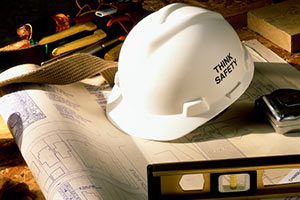February 23, 2021
Agency
Safe Work Rules

Developing a proactive safety and health program is one of the best ways to help you control workplace incidents resulting in personal injuries and property damage.
Why Do You Need A Safety Plan?
- To satisfy state and/or federal regulations
- To communicate procedures for reporting and recording accidents and incidents
- To reduce your risk of liability
- To plan for the unexpected
- To reduce the costs and financial impact of lost-time injuries
- To establish baseline expectations and safe work procedures/practices
- To give employees ownership in your program
- To provide a managerial reference guide
- To establish responsibility, authority and accountability for safe work performance
- To identify and reinforce safe work habits
Safe Work Rules:
Material Storage –
- Select a stable base with a solid, level surface free of holes and imperfections. Pipes and other materials that may roll or slide should be chocked at the base for stability or tied to vertical structural supports. When stacking loose materials, rotate every other row ninety degrees to interlock the layers. Masonry should be stepped back when above four feet high to assure stability.
- Maintain adequate aisle space. Leave enough room for hand truck, powered truck, portable fire equipment and workers to get to the material. Materials should not protrude beyond the face of the stack.
- Pile material to a safe height so that the stack will remain steady and not exceed the floor load capacity. Maintain at least 18 inches between any materials and activated sprinkler heads. Be certain to maintain a minimum three foot clearance around electrical panels.
Housekeeping –
- Dispose of oily rags, old paint cans and other containers that have held flammable liquids in the appropriate receptacle.
- Throw debris and scrap in properly labeled waste containers. Do not place combustibles or flammables in open containers. Use self-closing lid containers (FM and UL listed) to avoid potential fires from spontaneous combustion. Dispose of infectious waste and materials that have been used to clean up blood or other potentially infectious materials in the appropriate red containers marked with the biohazard label. This is consistent with the bloodborne protection plan of our company. Refer to the Bloodborne Pathogens section for more information.
- Pick up tripping hazards such as fasteners, lumber, wire, waste materials, etc., and dispose of them promptly.
- Practice good housekeeping around your work area. Everyone must look after their own area and report other areas in need of attention to the supervisor or a member of the safety committee.
Categories: Blog
